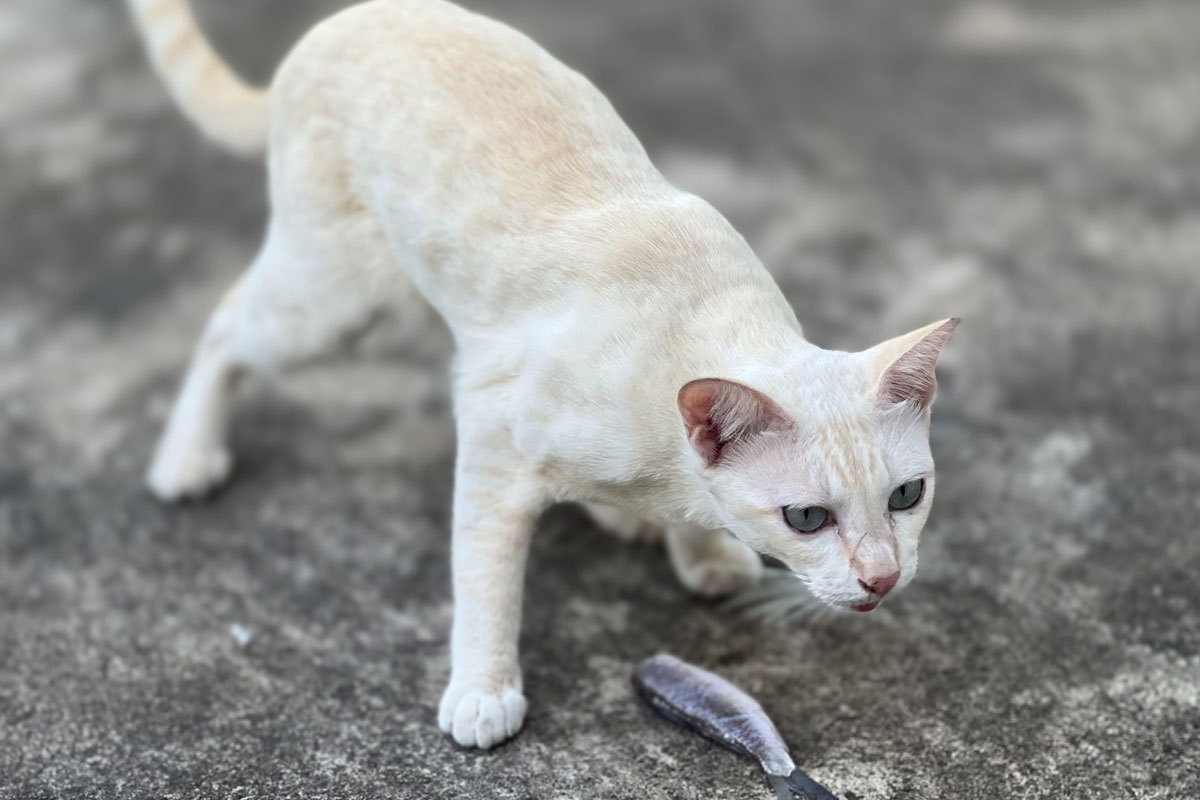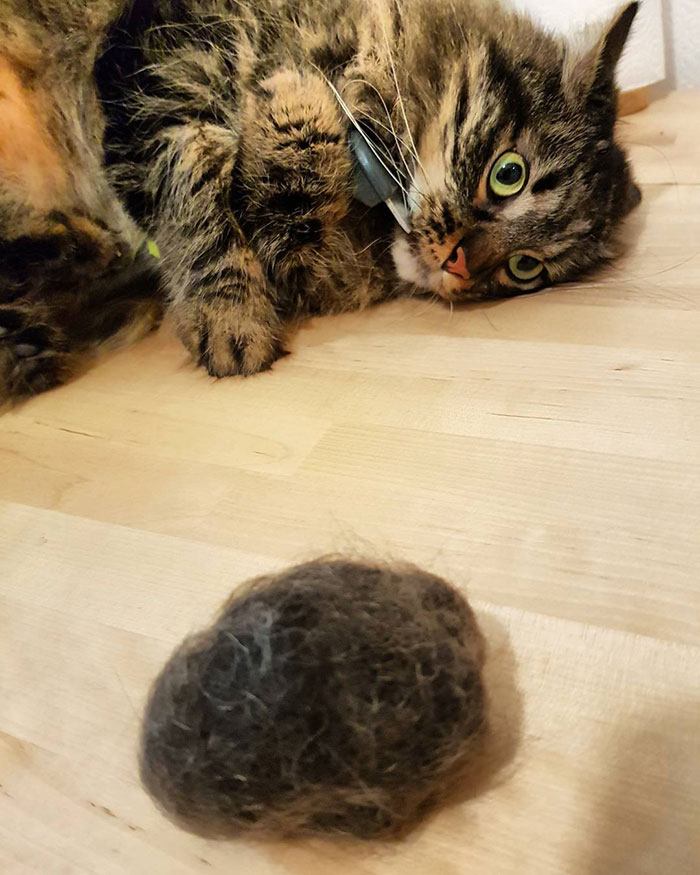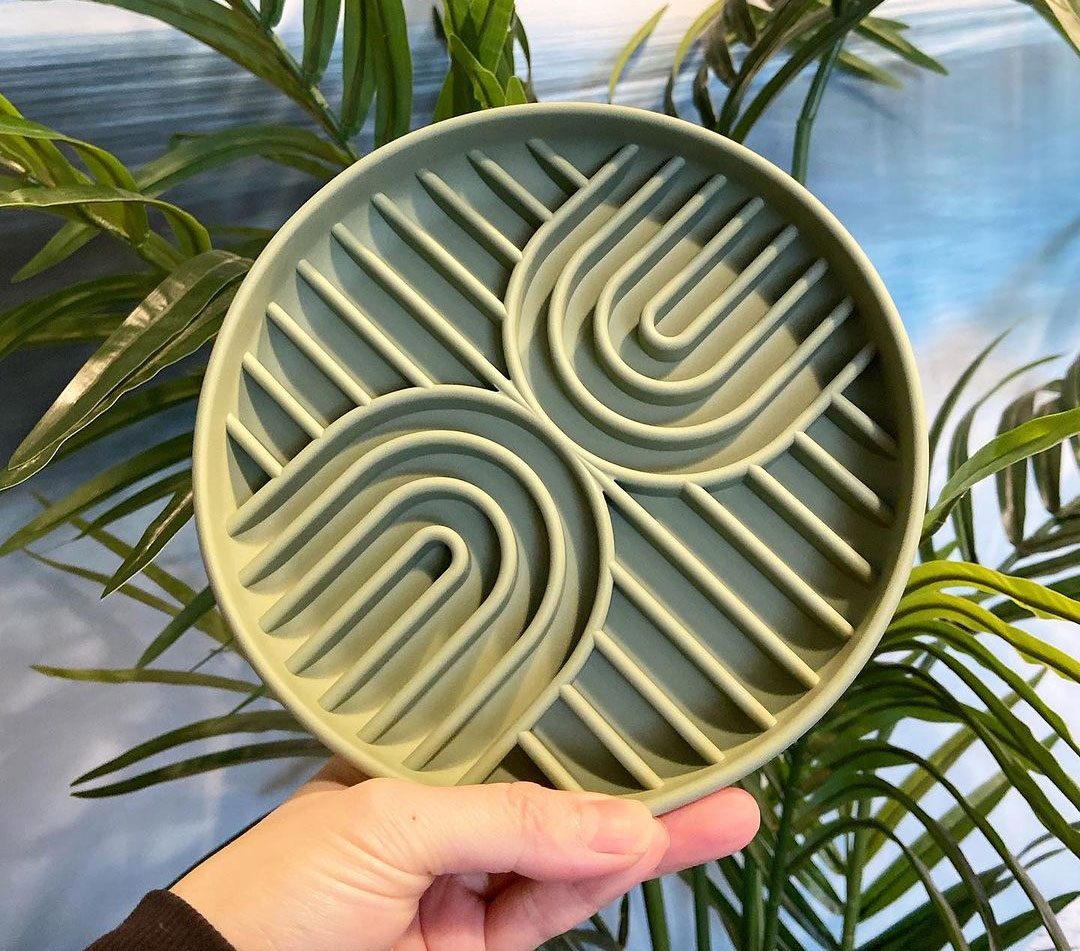Most cat owners will be all too familiar with the sound of their cat retching and gagging as they throw up bile, food, or saliva. Your cat may vomit every few months, or perhaps even more often than this. For most cats, infrequent vomiting is not cause for concern but is worth taking a look at.
If your cat is vomiting and seems unwell, this is something worth discussing with your local veterinarian. This is also true if your kitty has other symptoms, such as diarrhea, a lack of appetite, lethargy, or weight loss.
- Frequent cat vomiting warrants vet consultation.
- Common causes: Eating too fast, diet changes.
- Monitor individual vomiting episodes at home.
- Concerning vomit contains red or black fluid.
- To reduce regurgitation, use slow feeder bowls.
While not a fun task, taking a photo of what your cat has brought up can be helpful to show their vet during the consultation.
The information provided herein is for informational purposes only. Please refer to our disclaimer for more details..
- Why is my cat throwing up undigested food but acting normal?
- When should we be concerned about my cat throwing up?
- What does concerning cat vomit look like?
- What is the difference between vomiting and regurgitation?
- How can I reduce the incidence of feline regurgitation?
- How to help your cat when they are vomiting food
- FAQ
Why is my cat throwing up undigested food but acting normal?
A one-off episode of vomiting or regurgitating after eating would not be uncommon. Some of the more common reasons include:
- Eating too quickly. Rapid eating means that a lot of gas is ingested at the same time. It can also lead to over-eating, as the cat does not have enough time to feel full, so it continues to eat even when they no longer need food.
- An abrupt diet change (switching to a new diet should take several days when done correctly)
- Dietary indiscretion (eating something they should not have)
- Parasites. Cats who go outside or are raw-fed should be treated for worms every 3 months or so. Even indoor cats should receive routine prevention about once a year.
- Hairballs. Usually, long-furred cats have to deal with hairballs, but any cat can develop them. We can prevent them by brushing our cats regularly, especially when they are molting.
When should we be concerned about my cat throwing up?
It is time for a trip to the veterinary clinic if your cat is persistently vomiting or seems unwell. If your cat is eating, active, and happy and has only vomited once or twice, monitoring them from home is usually okay; most will improve quickly.
While vomiting is never regular, there is often a simple explanation, such as new ingredients in their food, a cat eating too fast or hairballs. If your cat is throwing up food but acting normal, you may wish to monitor them for a few hours to see how they improve.
What does concerning cat vomit look like?
There are certain things we should be looking out for when it comes to vomiting or regurgitation, and this includes red or black (digested blood) fluid within the vomit. While specks of blood can be due to inflammation in the esophagus, blood can also be an indication of gastric ulcers, a toxicity, an infection or even a cancer.
What is the difference between vomiting and regurgitation?
Regurgitation is a passive process and you will not see the abdomen contracting and heaving beforehand, as you would with a vomiting session. The cat brings up undigested or partially digested food when regurgitating, while vomits are more liquid.
In general, regurgitation in cats occurs soon after eating and regurgitation is often seen in those who gulp their food too quickly. Cats are not at all nauseous beforehand and we would not see signs such as drooling, weakness or food refusal.
How can I reduce the incidence of feline regurgitation?
There are plenty of things we can do, including:
- Using a slow feeder bowl to slow down eating
- Offering a bland and digestible diet, such as a prescription gastrointestinal food
- Offering smaller meals
- Avoiding making abrupt diet changes
- Switching to dry food (if your cat guzzles wet food)
- Preventing fur balls with regular grooming and the use of a fur ball paste when necessary
How to help your cat when they are vomiting food
Remember, vomiting will be associated with nausea, and your cat may feel quite sorry for themselves. To help support them when unwell, it is sensible to fast them for a few hours and to offer sips of water. However, we would not want to withhold food if the cat is very young, elderly or unwell.
Try to keep the home calm and quiet and minimise handling of your furry friend, so they have space to relax.
When due a meal, stick to very bland food such as white rice and chicken or white fish. It is also an option to offer a sensitivity diet, which are usually available to buy in pet shops or vet clinics.
Consult your veterinarian if you feel your cat is not themselves or the vomiting is not soon stopping.
FAQ
Could my cat have food allergies if they throw up food?
Absolutely, persistent vomiting can be one of the signs of food allergies. Cats can be allergic to a range of ingredients, including fish, chicken, beef, peas, milk or soya. Food allergies tend to develop before the age of five and, as well as vomiting, we may see additional signs such as runny stool, itchy skin and weight loss.
Can a hairball cause vomiting in cats?
Yes, some kitties can vomit and regurgitate if they have hairballs. We most often see this issue in longer-haired cats while they’re moulting in the warmer months. We can reduce the frequency of fur balls by grooming our cats daily, offering anti-hairball foods and treats and using hairball paste.
Should I change cat food if my cat regurgitates after they eat it?
Rather than a diet change, you may just need to offer small meals and to start feeding from food puzzles or slow-feeder bowls.
However, it can be worth trialing a sensitivity food if the problem persists.
Why does my cat make noise before they throw up?
Prior to vomiting, many cats vocalize and this can be quite loud and unpleasant to listen to. Us vets sometimes call this the ‘pre-puke howl’ and it is a reflex action that is not indicative of any pain.

 Image credits:
Image credits:  Image credits:
Image credits: 


12
0